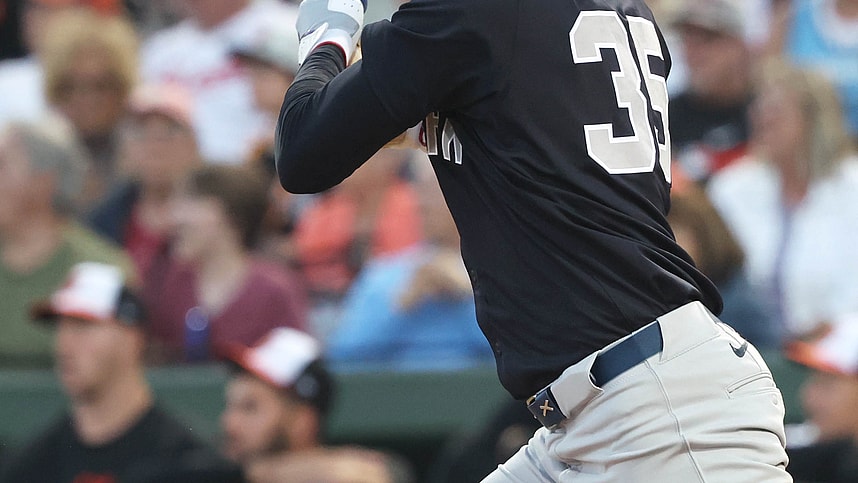
Taking my video on Fireside Yankees and making a couple of tweaks, we’re putting up my five hottest takes for the 2025 Yankees. I’ve attempted to make these takes pretty unlikely while also providing real reasons why they could actually happen, which is a tough needle to thread. The goal here is to just avoid going 0-5; if I did my job right then I should have misses in here, because the odds of all of this happening are probably < 1% right now.
Last season I went 1-5 on my takes, prediciting Luis Gil would strike out over 150 batters as he ended up with 171 on the year. Near misses included having Clarke Schmidt as their leader in pitching WAR, which could have happened without the injury, Giancarlo Stanton hitting 35+ home runs which also would have happened without a lengthy injury, and Austin Wells being an All-Star which could have happened if he reversed his first and second half numbers.
Those small details are part of why takes don’t come to fruition though, and being “close” doesn’t get me a win, I have to hit on the take straight-up in order to revisit it and claim victory.
Carlos Rodon Strikes Out 30% of Batters Faced
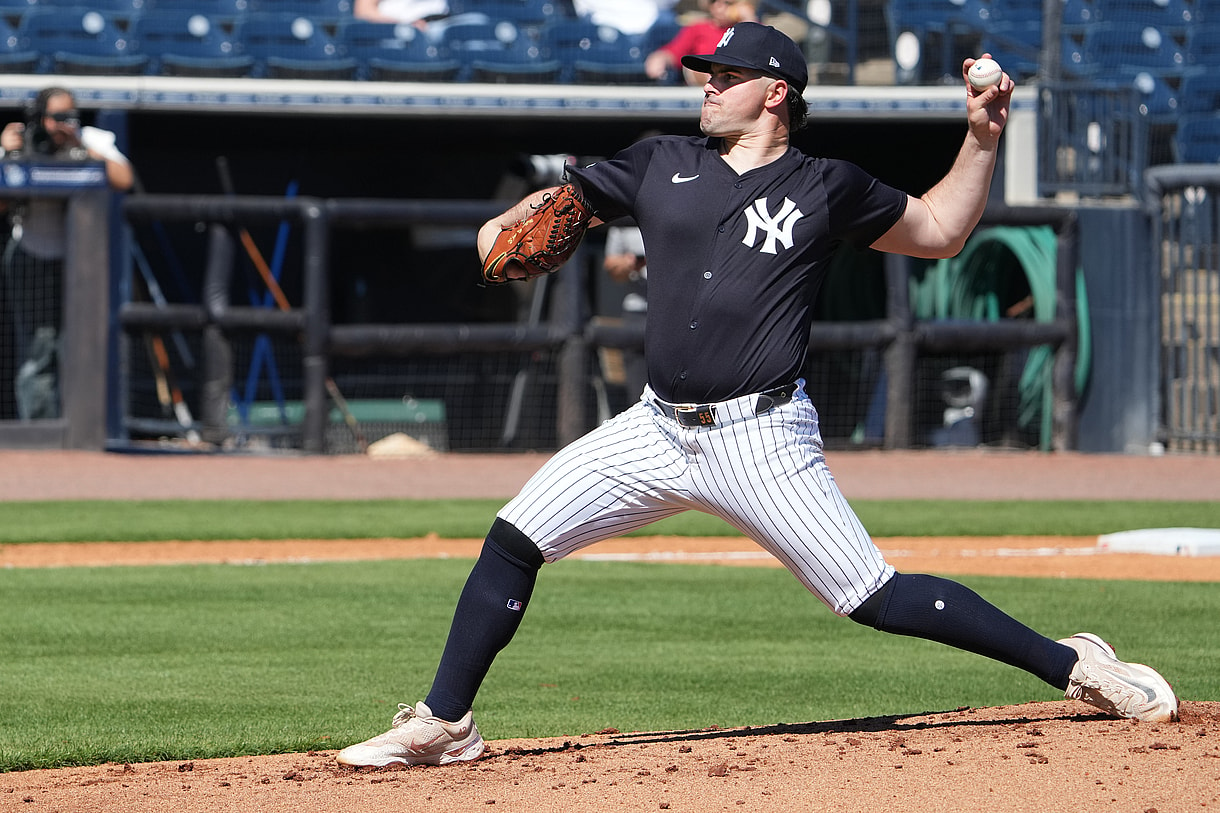
While Max Fried will be looked at as the pitcher to replace Gerrit Cole, if you asked Yankees’ GM Brian Cashman what he expected of Carlos Rodon when they initially signed him, it was to be a co-ace. He has not lived up to that billing, but in the second half, we saw a glimpse of the pitcher the Yankees paid for as he posted a 2.91 ERA and struck out 30% of batters faced. The reason for this was an uptick in changeup usage, with his offspeed pitch getting more run as a result of how well it was able to both suppress damage contact and generate swings and misses.
His changeup ranked in the 93rd Percentile among offspeed pitches in terms of Run Value, and throughout Spring Training we’ve seen Rodon use this pitch as his go-to strikeout pitch against right-handed batters. Rodon has used his four-seamer just 41.1% of the time against righties this Spring compared to 49.5% of the time in the regular season last season, and that shift should result in more walks, but less damage contact and more whiffs. I think you’ll trade some walks for home runs, as the biggest regression Rodon has had with the Yankees stems from his command not stuff.
READ MORE: Yankees infielder predicted to have breakout season by insider

If Carlos Rodon is going to miss, the hope is that he misses out of zone instead of in it, and I think that shift in philosophy paired with an increase in usage his best swing-and-miss pitches will result in way more strikeouts. I believe it will result in a strikeout similar to what we saw in the second half last season, thus the hot take that he’ll strike out 30% of batters faced in 2025. He is likely the only starter currently healthy on the roster who can pull that off, so his role as a strikeout artist will be extremely valuable for this pitching staff.
Now how will this affect his ERA? Carlos Rodon allows home runs at such a high rate that his ERA can fluctuate wildly month-to-month, but I do believe striking out so many hitters will allow that number to be ~3.60. His FIP in the second half was 3.93, his xFIP was 3.67, and his SIERA was 3.48 over that stretch, so it’s some happy medium in the middle with the most weight being placed on SIERA. The Yankees know that Rodon is capable of pitching like an ace on any given day, but not going after a hitter recklessly with a fastball over the heart of the plate could limit the blow-up starts.
In order to avoid a cheap win, Carlos Rodon will have to make at least 15 starts in order for ths to count.
Austin Wells Leads All Catchers in WAR
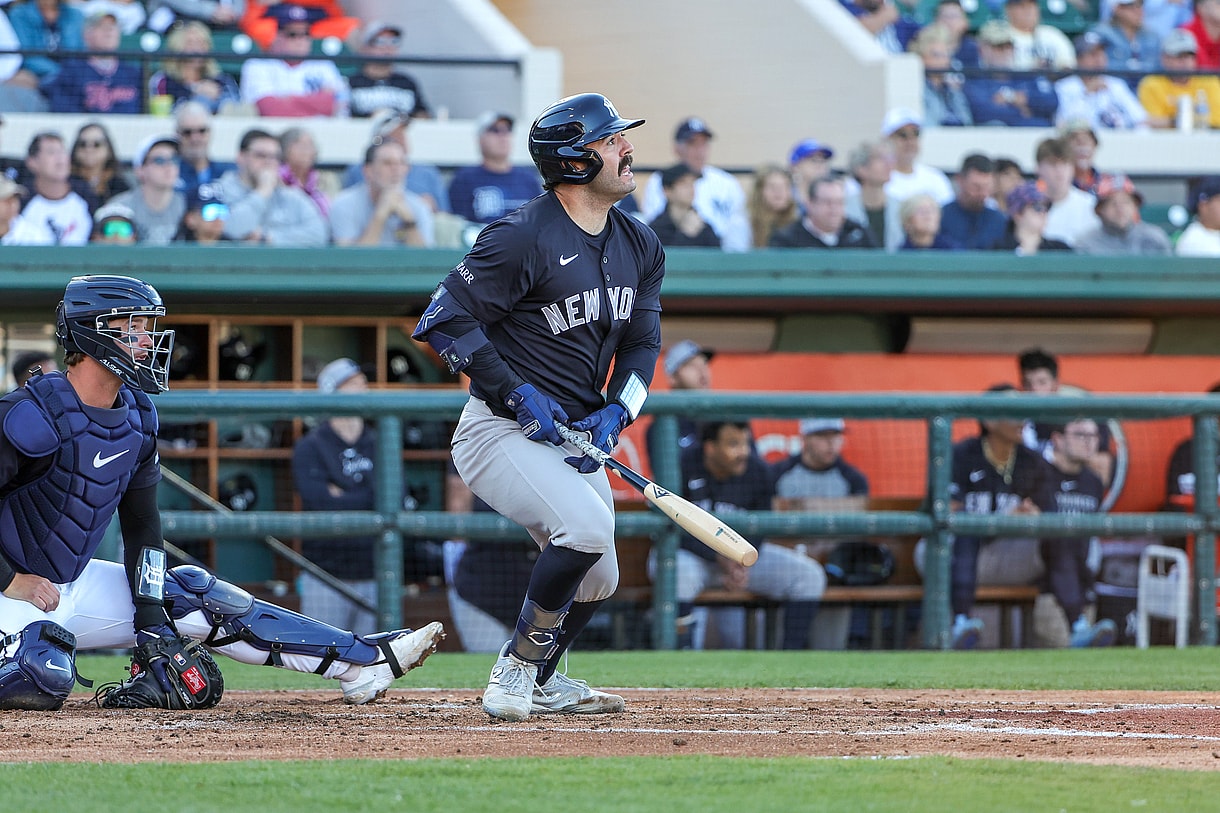
Austin Wells has made some serious improvements in Spring Training, and that’s reflected in his six home runs as the team’s primary lead-off man. With his position in the lineup, he’s going to get way more plate appearances than he did last season assuming he either matches or exceeds his games played total from last season. If healthy, he should be in the lineup for at least 130 games, as I would be stunned if Aaron Boone didn’t occassionally DH him against a RHP to insert J.C. Escarra in the lineup at catcher and give Paul Goldschmidt a day off.
The batted ball data for Wells is excellent, with his Average Exit Velocity and 90th Percentile Exit Velocity both being leaps and bounds better than even his hottest stretches swinging the bat last year. Whether it’s an excitement to have baseball back or some under-the-radar improvements to his swing path or strength, but Austin Wells has seen a dramatic increase in his swing speed. It should be noted that over the course of a grueling 162-game season (especially as a catcher), it will be harder to maintain these improvements, but this is still extremely encouraging:

A quicker bat might give him a better chance against hard four-seamers, as last season Austin Wells hit just .172 with a .328 SLG% against those fastballs when thrown at least 95 MPH. In Spring Training he ate those pitches alive, hitting .600 with a 1.800 SLG% as he blasted the kinds of pitches that coaches likely gameplanned as a counter to the second-year catcher. He also performed well against left-handed pitching, but with such a small sample size and the environment of Spring Training not being as competitive, there’s nothing to conclude from these data points.
I do forecast an improvement in those two key weaknesses in 2025 however as a result of his improved swing and mechanics at the plate, and there’s also some improvement you can bake in due to his results being worse than his expected data. We could see a 115-120 wRC+ from their new leadoff hitter, who is also an elite defender behind the dish, and that’s why I believe he can lead catchers in WAR. We’re going to specifically use FanGraphs for this one, as Baseball Reference’s version of WAR doesn’t place much of an emphasis on framing despite it’s high impact on team defense.
The Yankees Are a Top Five Baserunning Team in Baseball
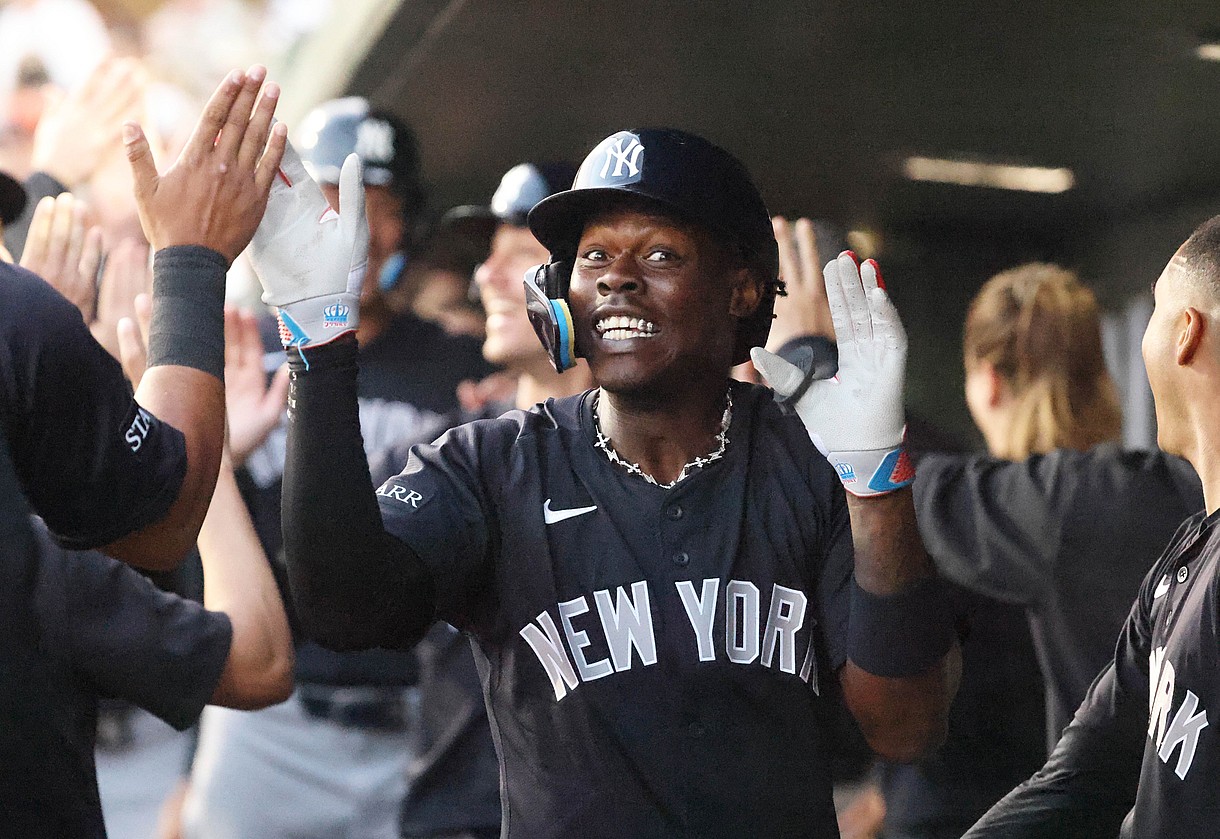
The Yankees ran a ton in Spring Training, with 39 stolen bases as a team which placed them fourth in Spring Training, and that’s a result of their new-look lineup. A full season of Jazz Chisholm and Jasson Dominguez should result in some extra speed, while Anthony Volpe is a fast holdover from last year’s squad. Cody Bellinger has some wheels and Paul Goldschmidt is a solid baserunner relative to the average first baseman, and they’ll be without all six of their worst baserunners from last year’s team on Opening Day.
Here’s the rationale behind my take; the Yankees are far younger and therefore even their “slow” guys have enough speed to take bases that Luis Rojas would otherwise have to advise his runners against taking. The Yankees were not aggressive on the bases and were thrown out at a high clip when they decided to try and take an extra base, and that’s an indication that their team was just too slow to properly execute positive baserunning plays. This is backed by Baseball Savant, which graded the Yankees out as the third-slowest team in baseball last season.
This year’s version of the Yankees will be quicker, and their Opening Day roster will consist of a pretty strong baserunning group based on last season.
READ MORE: Yankees sign funky left-handed free agent to MLB deal for bullpen

While only three of their nine projected starters had a positive BsR last season, the Yankees’ worst baserunner from last year is Austin Wells, and some of their negative baserunners could be positive ones this year. Paul Goldschmidt has been a positive baserunner even in his older age for most of his career, while Jasson Dominguez’s poor baserunning value seems to be a product of a small sample size and not his true talent. The Yankees also have two dynamic baserunners with Volpe and Chisholm, who anchor this group to have a combined 9.3 BsR.
A 9.3 BsR would have ranked them seventh among MLB teams in 2024, and their bench has some interesting baserunning threats as well. Trent Grisham has a career 7.1 BsR and Pablo Reyes has a 1.3 BsR, I expect J.C. Escarra to be a poor baserunner based on the fact that he’s a catcher and first baseman, but the combined efforts of this group could result in them cracking the top five. The 2025 Yankees will be great on the bases this year, and it’ll be something that endears the fanbase in a manner they haven’t been able to in recent years if the win total is high enough.
This one will be easy to track, the Yankees have to be top five in either Baseball Savant’s BaseRunning Run Value or FanGraphs BsR while being top 10 or better in the other.
Mark Leiter Jr. Is a Top 25 Reliever in Baseball
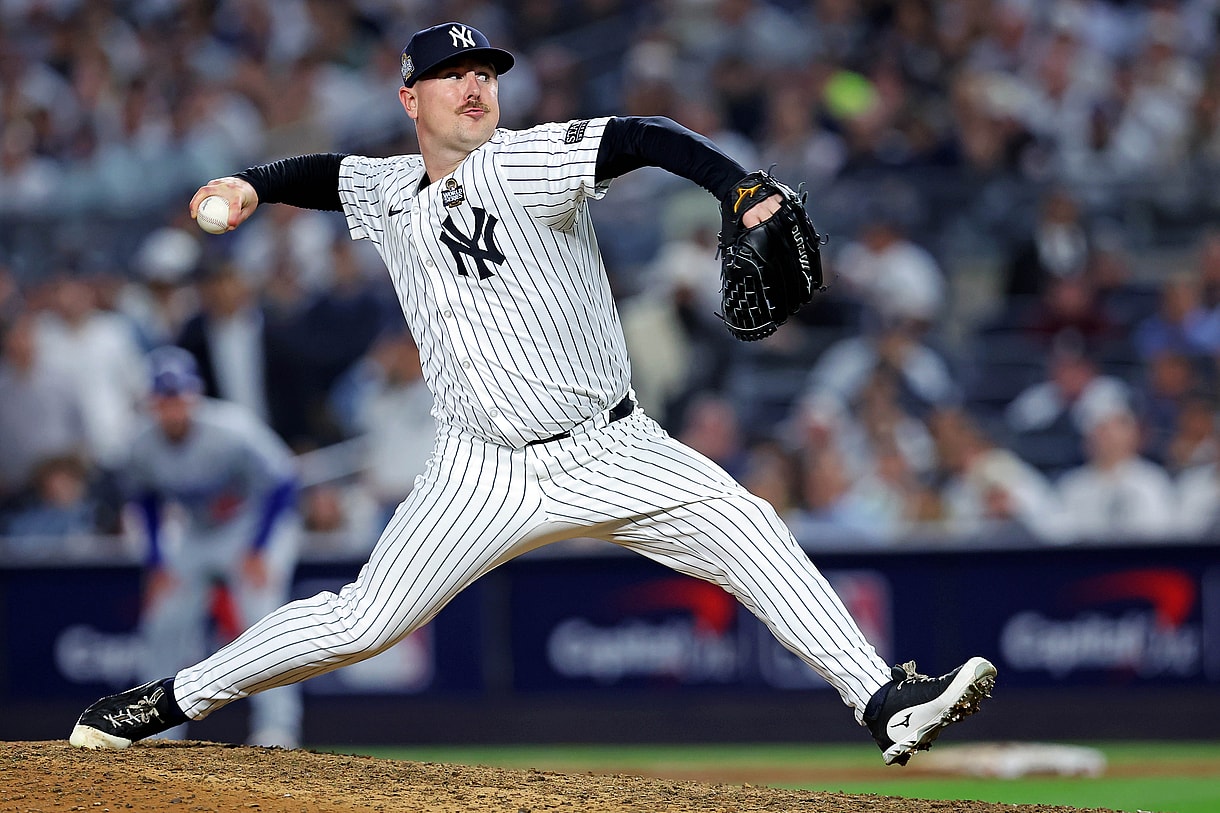
If you ask Yankees’ fans how much they trust Mark Leiter Jr. you may get a less than enthusiastic response, as the right-hander was brutal after being acquired from the Cubs at the trade deadline. The right-hander allowed six home runs across 21 appearances with a 4.98 ERA, as he was initially left off the team’s roster for the postseason. He only made their playoff roster to replace an injured Ian Hamilton, where he was able to come through with some big-time performances in the ALCS and World Series.
What most overlooked about Mark Leiter Jr. is that despite poor results, he still finished the season with excellent underlying data, posting a 3.44 xERA and 3.29 FIP across his 60 appearances. Few pitchers missed bats at the rate that he did in 2024, as he finished 12th in K% and 11th in Swinging Strike% among qualified relievers. Those underlying metrics would already signal a serious improvement in ERA from the year prior, but he has shown up to camp with improved velocity on his sinker and splitter.

Not pictured are the next two hardest pitches ever thrown by Mark Leiter Jr. which also came during Spring Training this year, and when your seven hardest pitches ever thrown come from one year, that means something to me. There’s a serious uptick in velocity and that could lead to Mark Leiter Jr. being even tougher to make contact with than he was last season, which should have a positive effect on his damage prevention as well. It’s a lot harder to turn around a 93-94 MPH sinker than it is to turn around a 91-92 MPH sinker, and that should give him more comfort in-zone.
In the postseason, he walked five batters in 5.1 innings pitched, avoiding the strike zone as often as possible in the hopes of not allowing a home run that could cause the Yankees to lose a criticial game. He was threading the needle in a way that isn’t sustainable over the course of a full season, but the addition of some zip on his sinker should give him more comfort attacking the strike zone. The right-hander was already elite at striking hitters out, now he could have a more managable HR/9 allowed, giving him all the traits of an elite reliever.
No metric has aged better in an age of ever-evolving pitching development than K-BB% has, and Mark Leiter Jr. not only projects well because of how high his was last year, but also because his stuff is a lot better.
This is tougher to measure; should I use WAR? Win Probability Added? ERA? I’ll say that Mark Leiter Jr. has to be top 25 in either WAR or WPA and top 35 in the other among relievers.
The Yankees Have 2 All-Star Game Starters in the Outfield (Again)
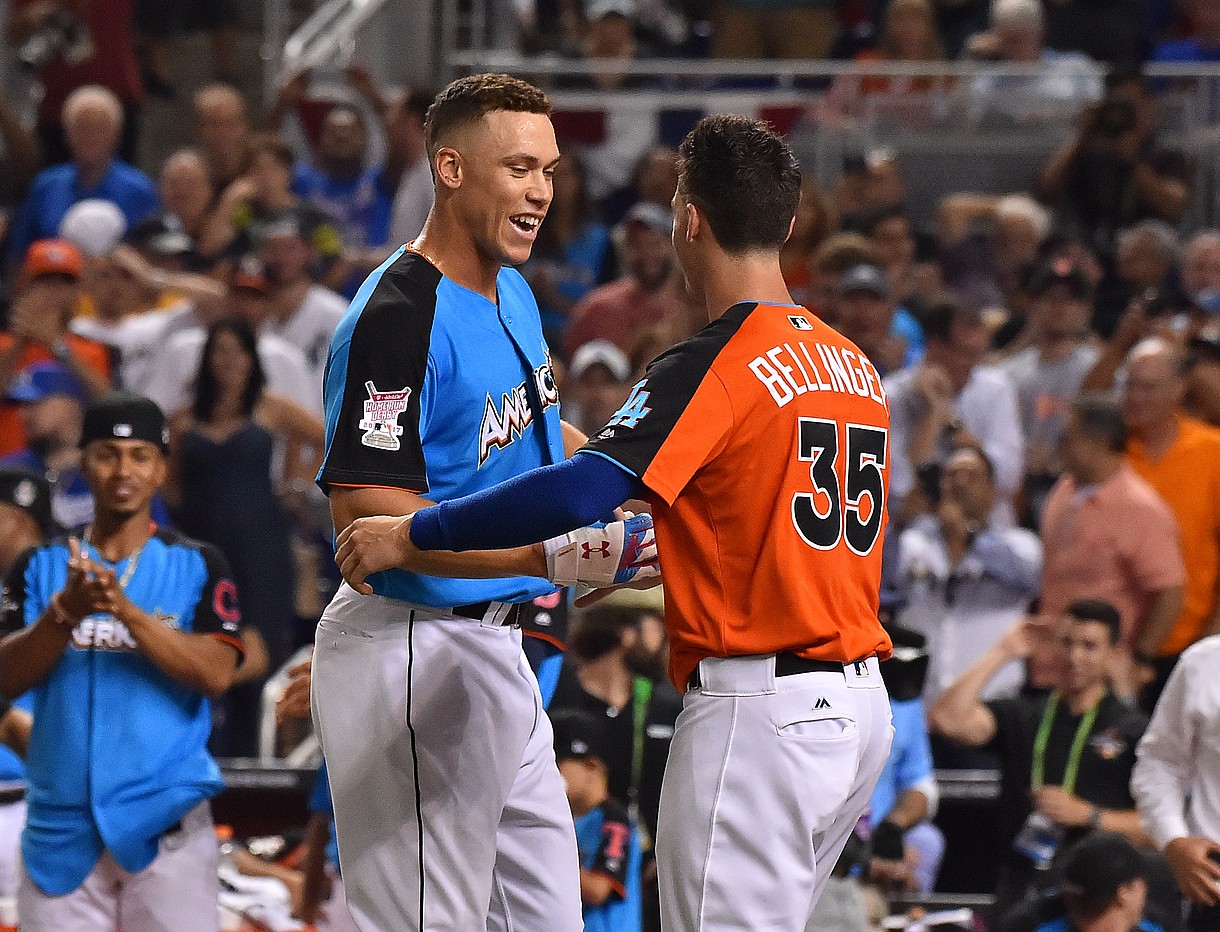
The Yankees last season had two All-Star Game starters in the outfield, which they also had in 2022 with Aaron Judge and Giancarlo Stanton. This year they’ll do it again, but this time it will be Cody Bellinger winning the starting job in centerfield, and this take is more loaded than you think. I’m not claiming that Bellinger will be the best centerfielder in the American League this year; if that was my barometer I would have simply made that my bold take.
Instead, I am relying on a mixture of positive signs from Spring Training, Bellinger’s appealing profile for a casual fan, the shift in ballpark, and the lack of overwhelming competition in the outfield. Steamer projects Cody Bellinger to finish 13th in WAR among AL outfielders, but right off the bat you can knock three players out of contention here. Jazz Chisholm, Brent Rooker, and Yordan Alvarez will likely not be eligible as outfielders for the All-Star Game, thinning the pool to just having nine outfielders projected ahead of Bellinger.
His 2.7 projected WAR is just 1.2 WAR behind Riley Greene, just outside the margin of error for the metric, but the most important aspect of this conversation is that full-season WAR isn’t the end-all-be-all. Francisco Lindor wasn’t named to the NL All-Star team because his eye-popping numbers and perception among fans didn’t shift positively until after fan voting, and yet he was one of the two best players in the National League last season.
Cody Bellinger just has to be very good until the voting period ends, and in a ballpark where he’ll have a much easier time hitting home runs, we could see him ambush pitchers who haven’t had time to adjust to this new advantage.
READ MORE: Yankees sign right-handed ground ball machine to minor league deal
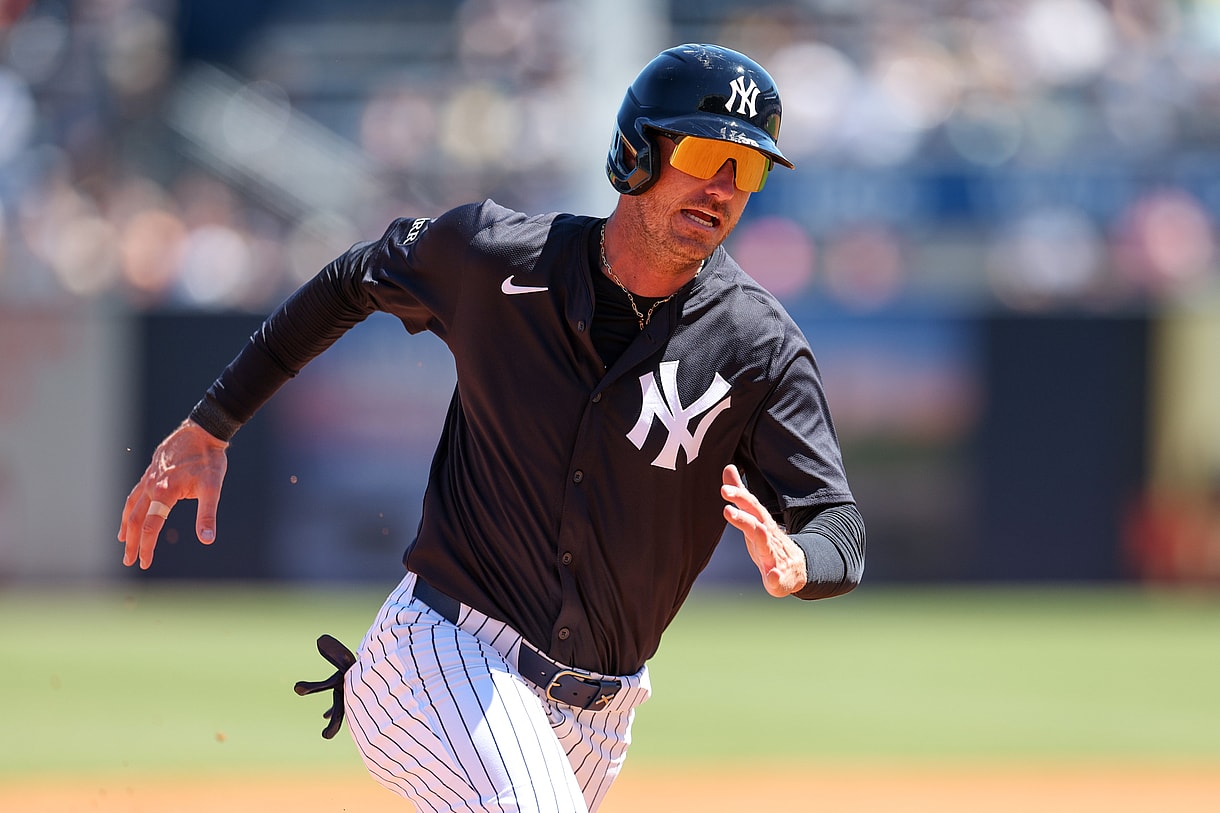
Wrigley Field was a nightmare for left-handed hitters last year, as it was tied with T-Mobile Park for the lowest Park Factor (90) in regard to left-handed hitters. Yankee Stadium on the otherhand finished in the top 10 with a 102, and that change in home ballpark could do wonders for Bellinger. His struggles while playing in Chicago last year provide further evidence to suggest he would have had a stronger season playing anywhere else, as he slugged .399 at home with a 99 wRC+ compared to a .451 SLG% and 117 wRC+ on the road.
If you look at his spray chart, Cody Bellinger would have hit more home runs playing all of his home games at Yankee Stadium. More home runs paired with Aaron Judge hitting in front of him could mean a high RBI total as well, which will help Bellinger with the fan voting process as his counting stats will certainly play a factor in how many votes he gets. He was on-pace for 90 RBIs had he played 150 games last season, and might end up crossing the 100-RBI threshold in 2025.
His raw power output could also improve a bit from his 2024 season, as his 2025 Spring Training data includes a massive spike in batted ball quality across the board.

Those improvements are bound to shrink and even themselves out over the course of the regular season when Bellinger faces stiffer competition, but maybe he ends up improving on his 2024 batted ball data by a decent bit. In an article done by Gary Phillips of the New York Daily News, Bellinger does reveal that he’s using a new bat model and that there was bat fitting done, utilizing technology to track the exit velocity and swing path he had with various bats until he found the model and weight distribution that worked best for him.
He’s the kind of profile who has a game that appeals to the casual fan who may overrate high counting stats in the voting process, and if he remains committed to hitting the ball hard to right field, he could have a sabermetric appeal as well. I think there are some striking similarities between he and Anthony Rizzo back in 2022, who leaned more into the Yankees’ gameplan of pulling the ball in the air and hitting it hard over trying to hit for a high average, and it resulted in a 32 HR campaign with a 131 wRC+.
I’m not expecting that same kind of offensive output, but the change in home ballpark paired with what I believe will be some batted ball quality improvements could lead to a ~120 wRC+ with good counting stats. If that wRC+ distribution is around a 130 pre-voting and a 110 post-voting, then we could be looking at Cody Bellinger as the All-Star Game starter, similar to how Giancarlo Stanton got his nod despite a slide at the end of the 2022 season.
Easy to grade this one; either start in the All-Star Game or it’s a miss.
More about: New York Yankees